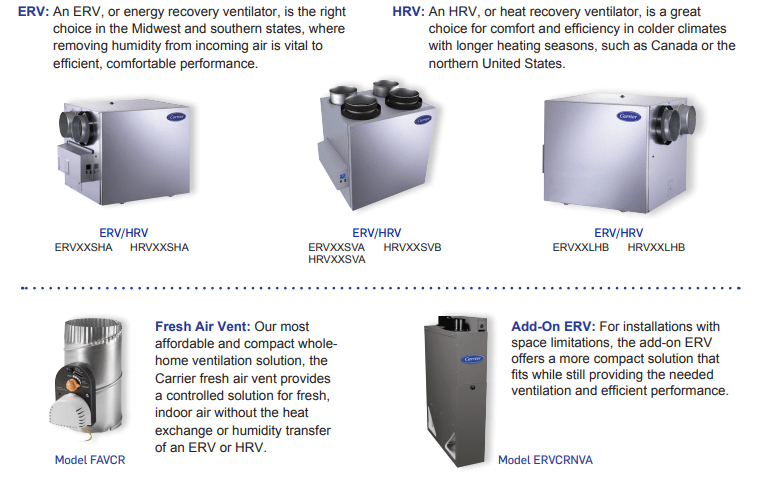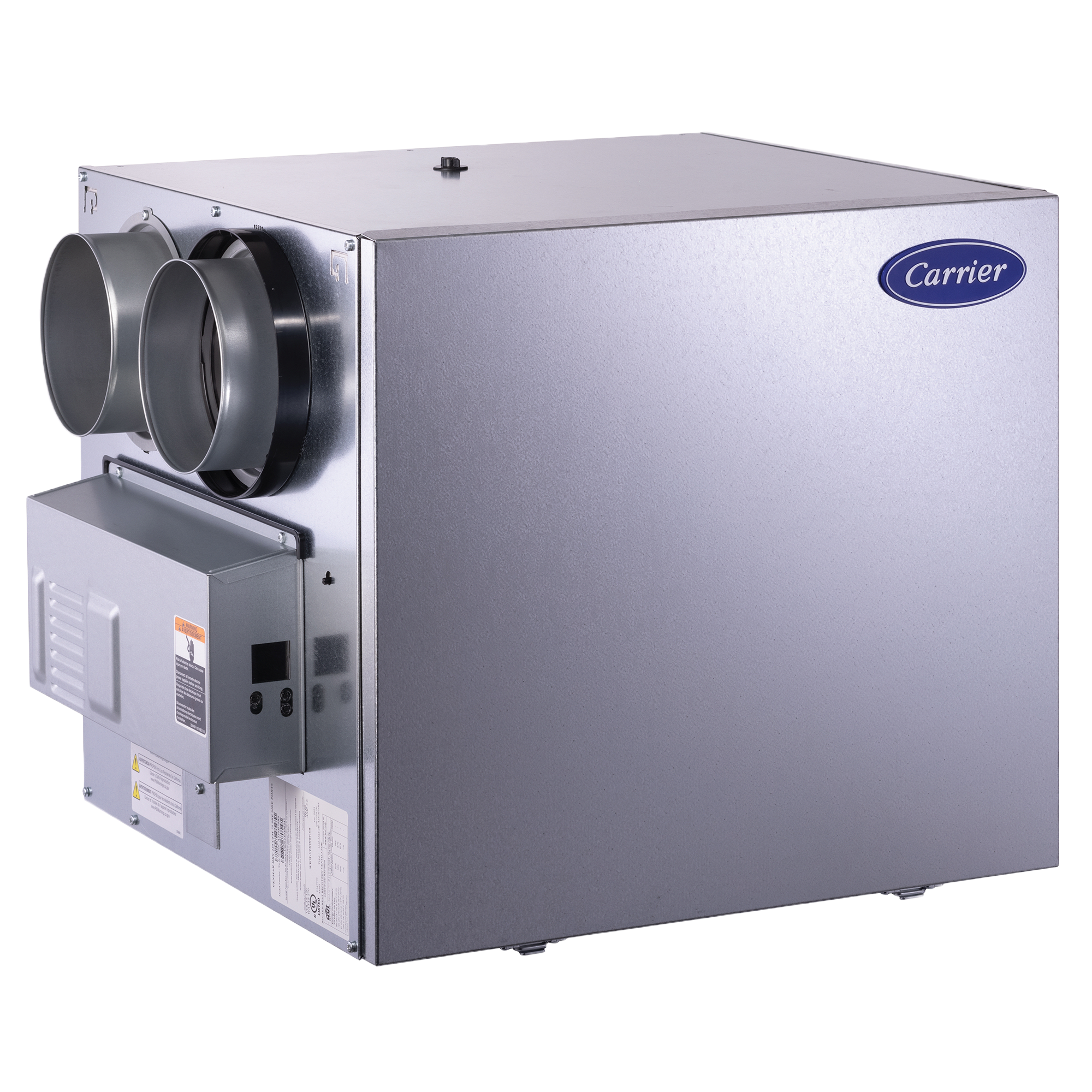Energy Recovery Ventilator (ERV System)
By Travis Baugh
Energy recovery ventilator systems, commonly known as ERV systems, are essential for maintaining a healthier indoor environment in homes. ERV systems provide fresh air while recovering energy from exhaust air, minimizing energy loss and enhancing indoor air quality. Interested in how an Energy Recovery Ventilator (ERV) works or the energy efficiency benefits it provides? This article will dive deeper into energy recovery ventilators.

What is an Energy Recovery Ventilator?
An energy recovery ventilator helps improve indoor air quality by exchanging stale indoor air with fresh outdoor air while recovering energy from the outgoing air to pre-condition the incoming air. This continuous supply of fresh air is particularly beneficial in airtight homes where natural ventilation is limited.
The primary difference between a energy recovery ventilator and a heat recovery ventilator (HRV) is that an ERV transfers both heat and moisture, helping to maintain proper humidity levels. This feature is especially valuable in warmer climates.

How Does an ERV System Work?
An ERV system helps improve indoor air quality by exchanging stale indoor air with fresh outdoor air while recovering energy from the exhaust air, reducing energy consumption, and maintaining comfort.
When an ERV system operates, stale indoor air and fresh outdoor air pass through separate channels in the ERV unit, preventing the mixing of the two air streams. The energy recovery core allows the transfer of heat and moisture between the air streams without mixing them, during cooling season the ERV is precooling and dehumidifying incoming air while heating and humidifying outgoing air. In the winter months the opposite transfer occurs. The incoming outdoor air is pre-heated while it passes through the core and if the air in the winter months is drier inside than it is outside, the core will also transfer the moisture.
Balanced ventilation, a key benefit of ERV systems, ensures an equal amount of fresh outdoor air is supplied while an equal amount of stale indoor air is exhausted. This prevents the buildup of pollutants, allergens, and excess moisture, maintaining good indoor air quality. Learn more about what is home ventilation.
Benefits Of Using An ERV System
Improved Indoor Air Quality
Energy Recovery Ventilators and Energy Efficiency
ERV systems recover energy from outgoing stale air, capturing the heat or coolness and transferring it to incoming fresh air. This process reduces the energy needed to condition incoming air, resulting in lower energy consumption and cost savings. Integrating an ERV system with an existing HVAC system also can reduce heating and cooling expenses by recovering energy from exhaust air, decreasing the workload on HVAC equipment. This results in more efficient system operation, lower energy consumption, and can lead to long-term heating and cooling savings.
Balanced Humidity Control
ERVs help maintain optimal humidity levels, preventing excess dryness in winter and reducing excessive moisture in summer, which can lead to mold growth.
Enhanced Comfort
With continuous fresh air circulation and humidity control, ERVs create a more comfortable indoor environment, reducing temperature fluctuations and preventing stale air.

Choosing an ERV System
Carrier offers a range of high-quality ERV systems and heat recovery ventilators designed for residential applications. Our systems are engineered to deliver exceptional indoor air quality and energy efficiency, providing homeowners with a comfortable and healthier living space. Work with your local Carrier dealer to choose the right ERV ventilation system for your home to ensure a healthier and comfortable indoor environment.

Frequently Asked Questions on Energy Recovery Ventilation Systems
Explore Carrier Energy Recovery Ventilators
A Carrier Energy Recovery Ventilator (ERV) improves indoor air quality by efficiently exchanging stale indoor air with fresh outdoor air while minimizing energy loss. It helps maintain optimal humidity levels and reduces heating and cooling costs by recovering energy from the outgoing air. With advanced filtration and quiet operation, Carrier ERVs provide a comfortable and energy-efficient ventilation solution for homes. Explore Carrier's line of energy recovery ventilators today.
Ideal for warmer climates and horizontal installations. Offers airflow up to 210 cubic feet per minute. Door color is slowly transitioning from tan to galvanized steel.*
Ideal for warmer climates and horizontal installations. Offers airflow up to 128 cubic feet per minute.
Ideal for warmer climates and vertical installations. Offers airflow up to 150 cubic feet per minute.




